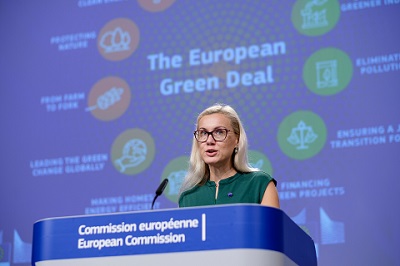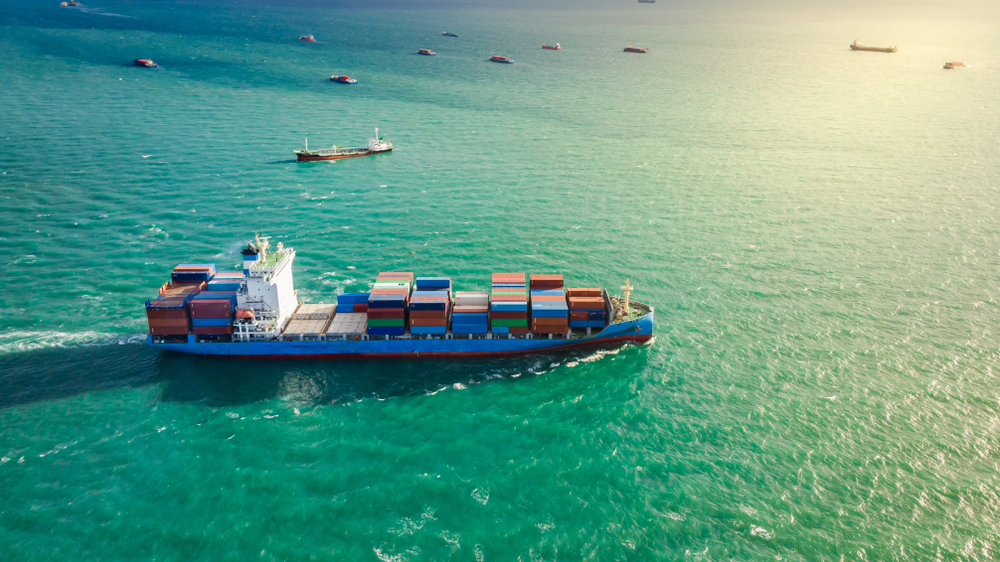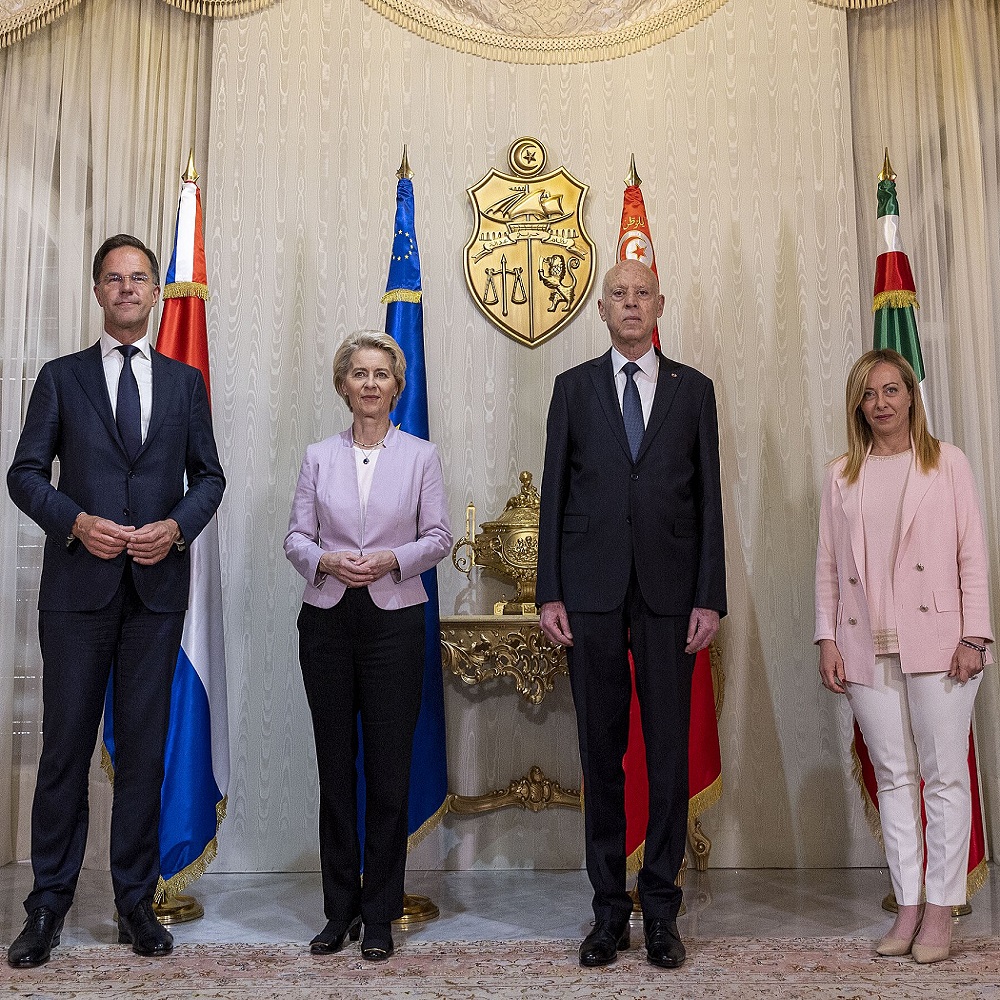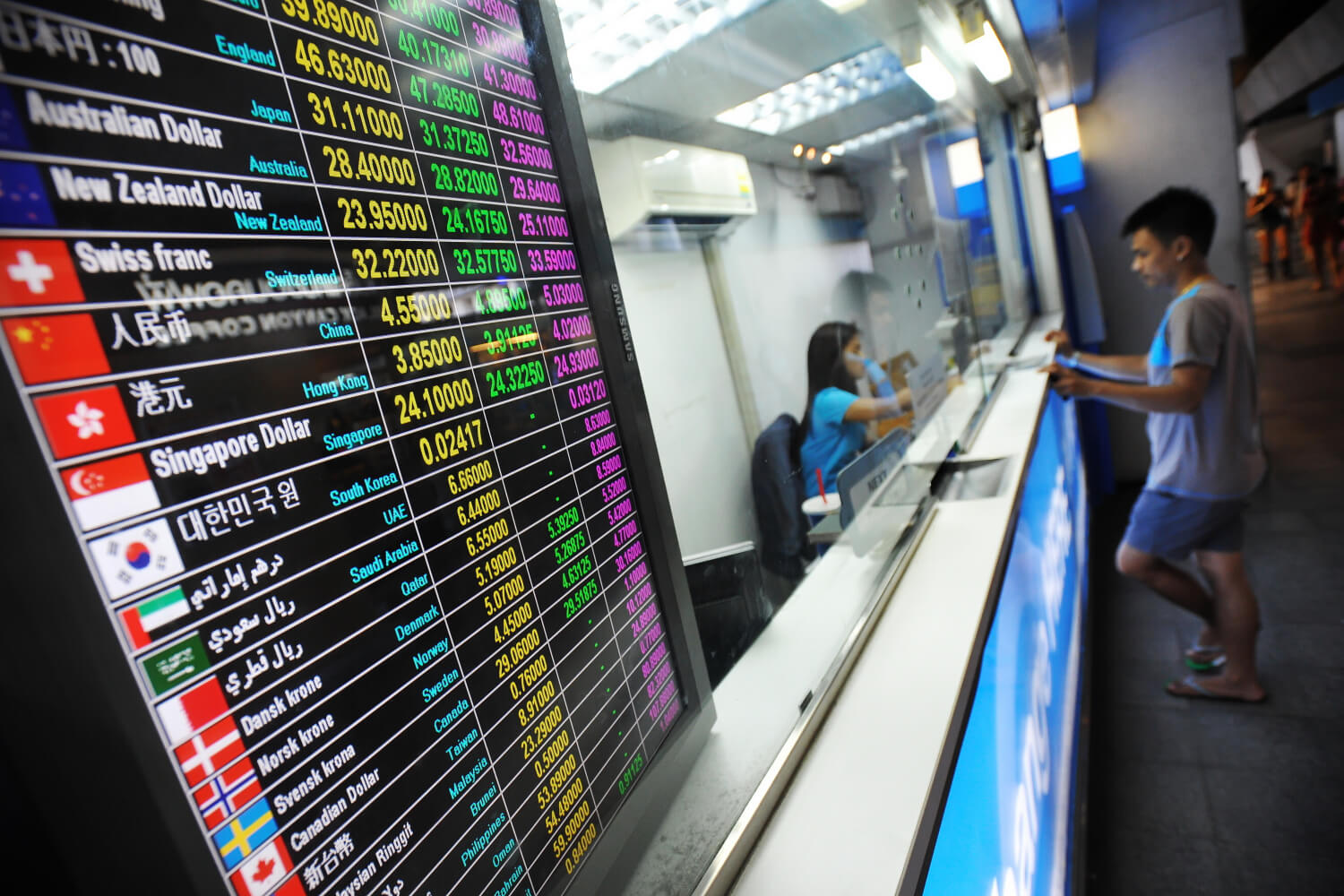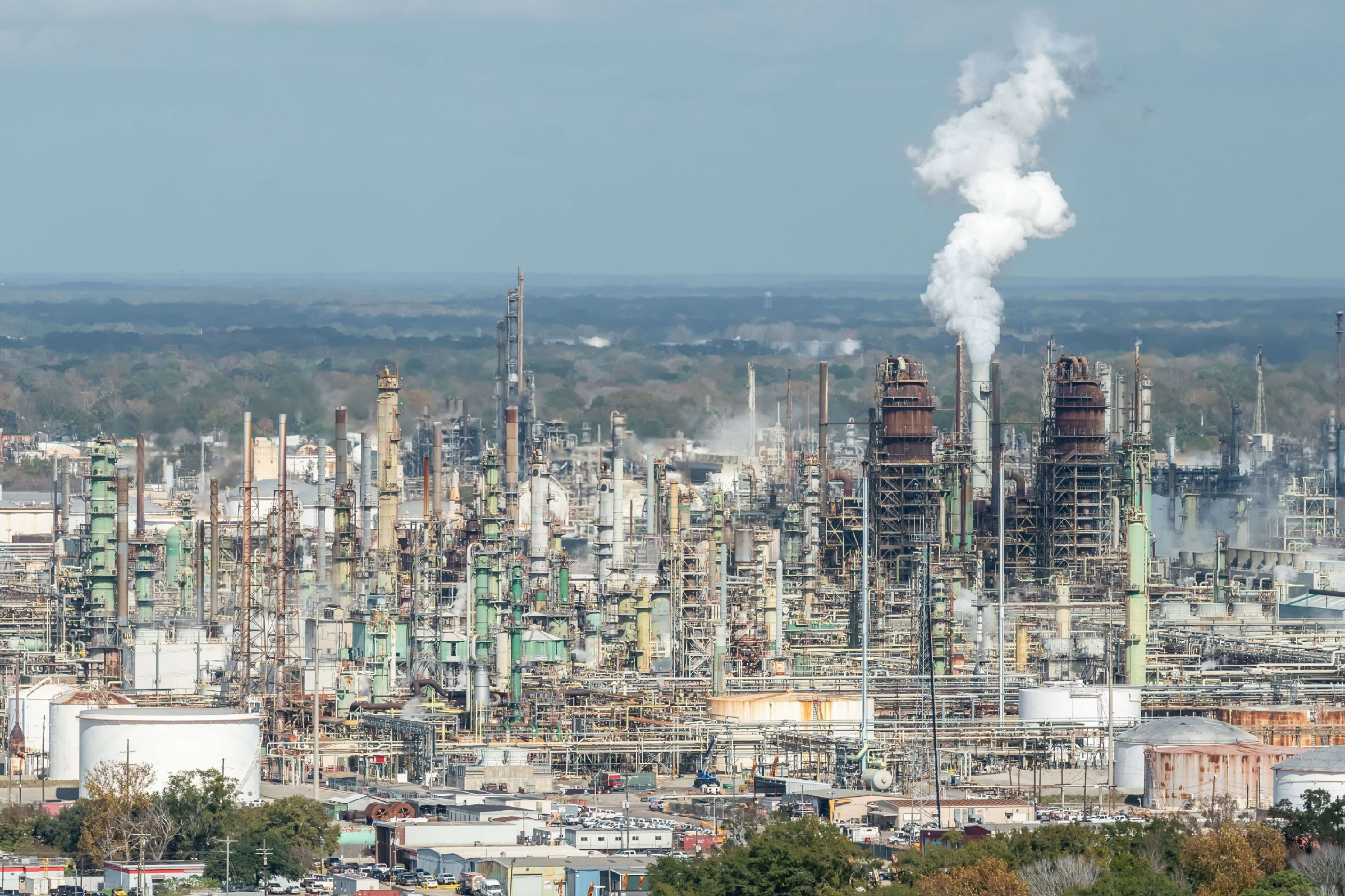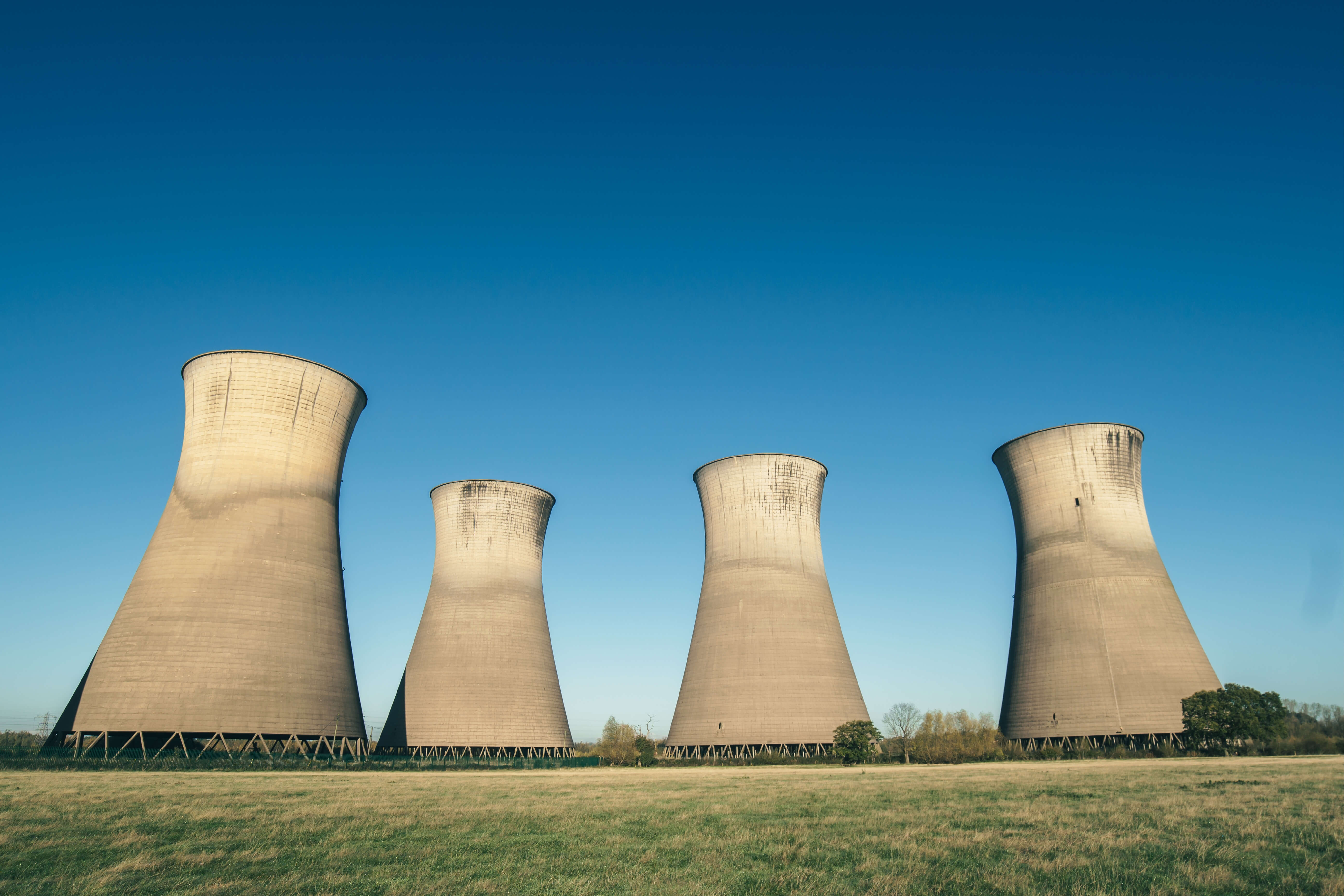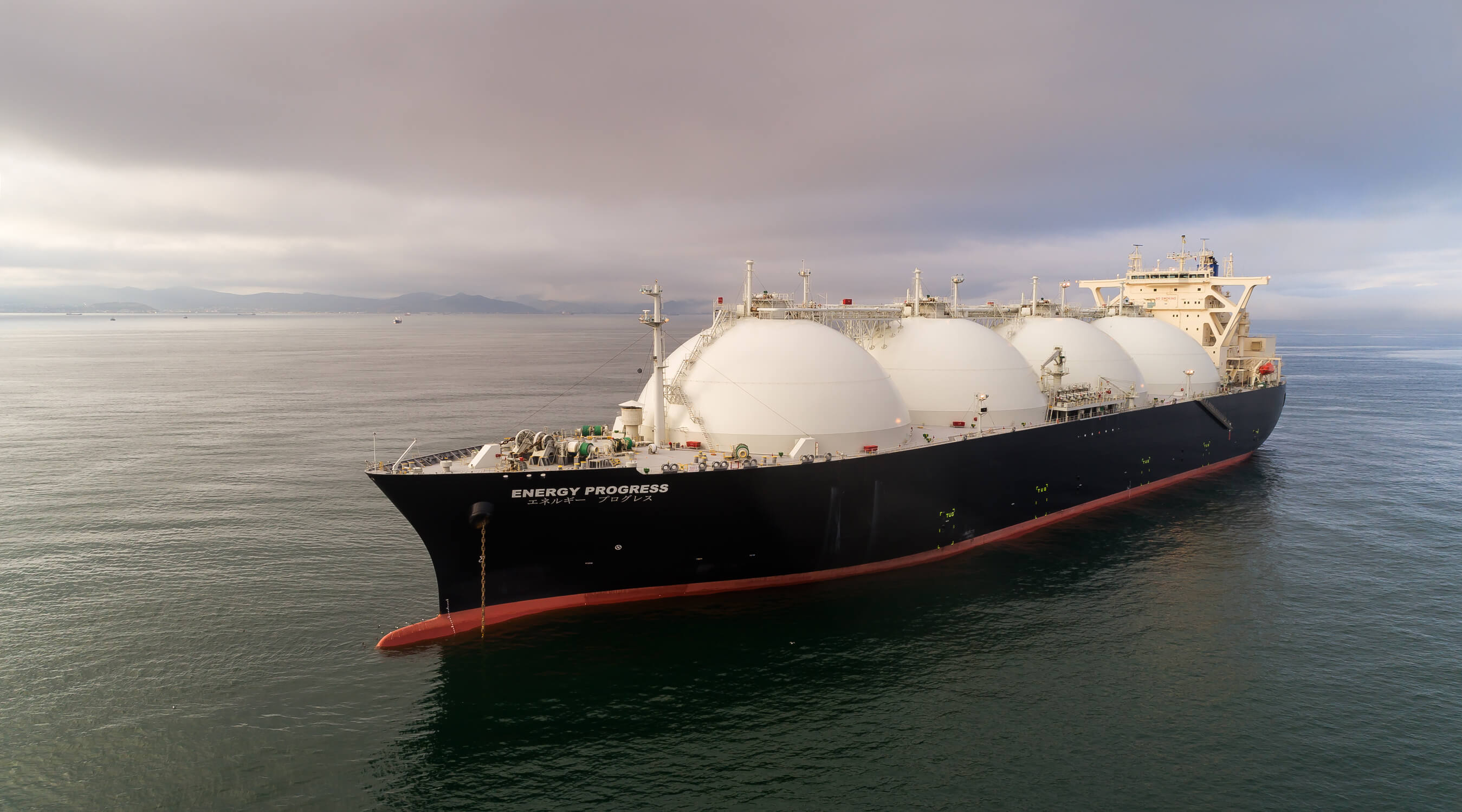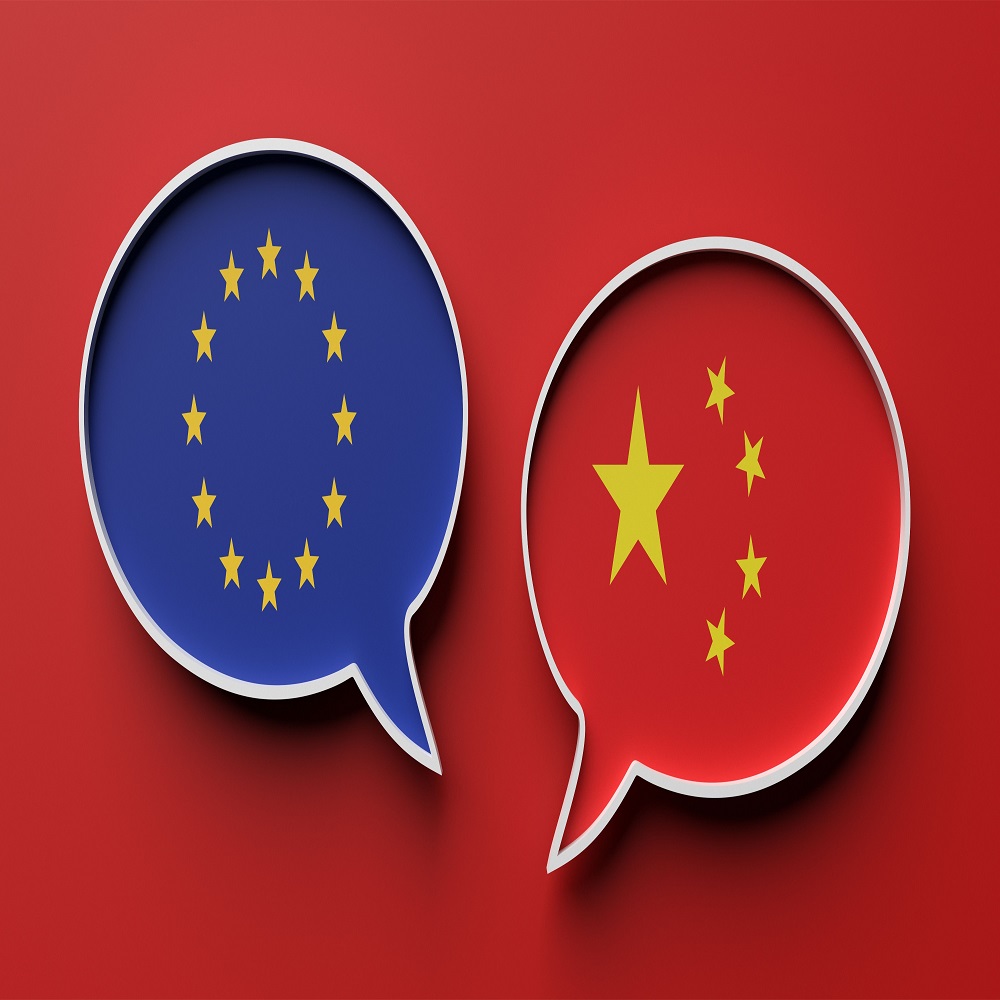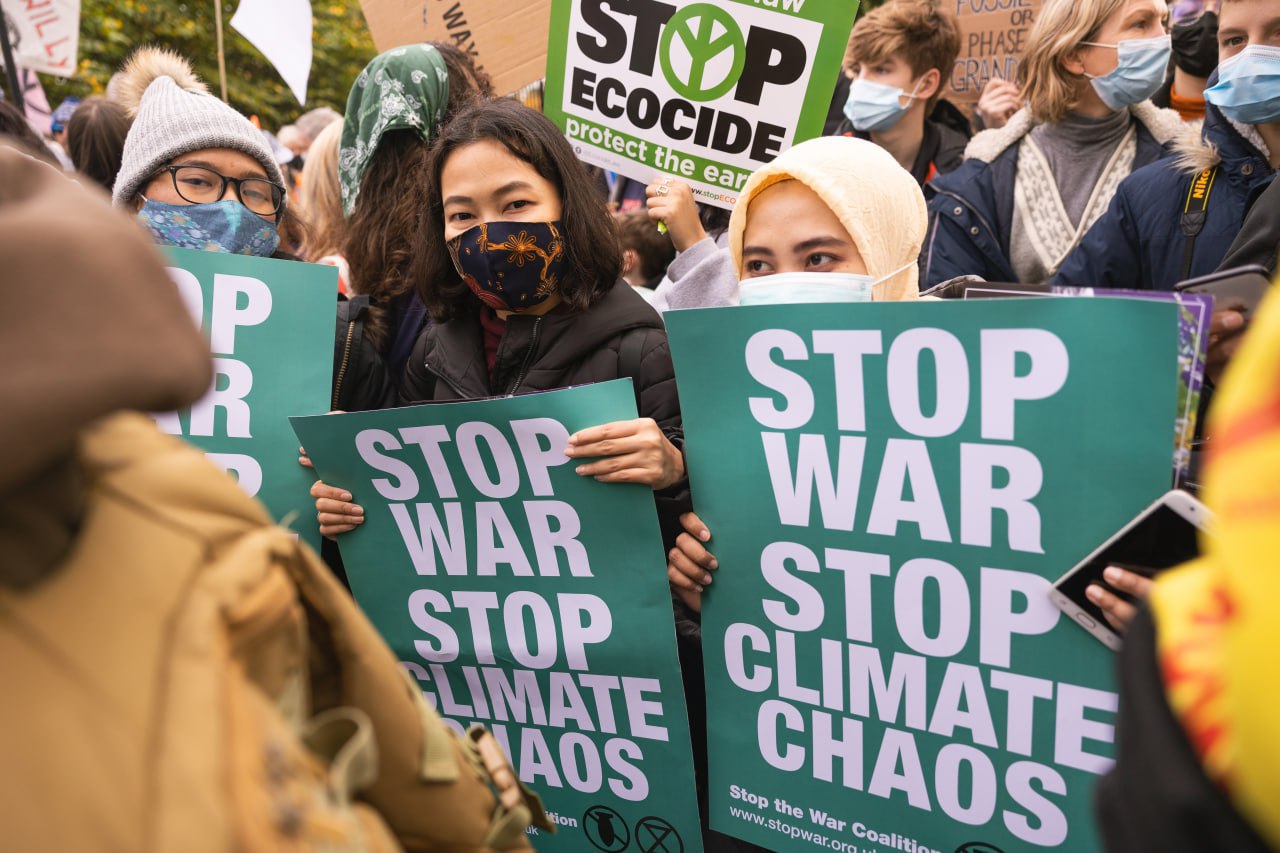Developing Nuclear Energy in Estonia: An Amplifier of Strategic Partnership with the United States?
by Tomas Jermalavičius , Max Bergmann , Peter Crail , Thomas O’Donnell , Tomas Janeliūnas
IntroductionEurope is confronting twin energy crises resulting from the impact of climate change and its energy dependence on Russian fossil fuels. Addressing these crises will require the European Union (EU) and its member states to engage in nothing short of an energy revolution that will decarbonise Europe’s energy usage and end dependence on Russian fossil fuels. Russia’s invasion of Ukraine has focused transatlantic attention on the importance of energy security and ending energy reliance on Russia. While the EU and US are now both taking immediate steps to reduce consumption and reliance on Russian supplies, some of these steps may result in increased emissions or will lead to greater reliance on other autocratic suppliers. To address the twin challenges of climate catastrophe and Russian aggression, significant action will be needed on the energy transition front in the short, medium, and long term. Estonia, like other EU (and NATO) members is therefore at an energy crossroads. Unlike many of its EU fellow member states, it has not been highly dependent on Russian energy supply and is relatively energy secure. Domestically produced oil shale accounts for 55% of Estonia’s domestic energy supply (as of 2020).While, prior to the Russia-Ukraine war, Estonia received roughly 93 percent of its natural gas from Russia, natural gas accounts for less than 8% of Estonia’s overall energy consumption.Furthermore, the imports of the Russian gas came to an end as a result of steps taken by the Estonian government, in response to Russia’s aggression, and were replaced by liquified natural gas (LNG) from other suppliers. However, oil shale is very carbon-intensive, while increasing reliance on natural gas will do little to decarbonise energy system in the long-term. In order to meet Estonia’s climate commitments, embedded in the EU’s Green Deal and “Fit for 55” goals, Estonia will need to develop alternative sources of energy but will encounter manifold challenges in this transition. As the climate crisis deepens, the failure to meet climate targets could also have significant reputational costs internationally. Moreover, the effort to “electrify everything” – from cars to heating – will likely lead to increased demand for electricity. This will require not simply swapping out energy sources but producing more electricity with the goal of having an abundance of energy. Additionally, an abundance of cheap and clean energy will be necessary to support carbon removal projects, such as through direct carbon capture and storage technology. Thus, no matter the technological developments in other energy types, there will be demand for an abundance of clean energy. Furthermore, while there have been significant advances in renewables, there are also concerns about intermittency – when the sun is not shining, or wind is not blowing – as well as space needed for deployment. One potential zero carbon technology for Estonia to consider is new advanced nuclear technology in the form of small modular nuclear reactors (SMR). Developing a small modular reactor could contribute to enhancing regional energy security within the EU and to achieving the EU’s climate objectives. A decision to adopt nuclear energy, however, has implications not only for the national energy system or broader climate objectives. It is a sensitive area that intersects with geopolitical and national security considerations. Its pursuit means new opportunities for deepening strategic partnerships, and cooperation in nuclear energy technology is often an effective vehicle to enhance not only commercial and technological interactions but also security and foreign policy ties between countries. This is of particular importance to countries such as Estonia that seek the greater involvement of main allies such as the US, UK, France, and Germany in the Nordic-Baltic area to counter geopolitical pressure from Russia and China. The United States stands out as a pivotal ally, but the US “footprint” in Estonia remains small compared to what it could be. Also, Estonia’s foreign and security policy is currently heavily tilted towards diplomatic, military and cyber aspects when it comes to engaging the US, while energy security and energy technology receive far less attention. Nuclear energy cooperation would create new opportunities for enhancing US-Estonia ties. At the same time, any efforts of Estonia to have “more US” in the region – particularly in such sensitive sector as nuclear energy, but also across the board – may encounter resistance. Some of it would inevitably arise from Russia and its geopolitical confrontation with the West, but it would also stem from the notions of “European sovereignty” as well as some persistent characteristics of intra-European relations, structural issues in national energy policies, and diverging geopolitical perspectives of some key countries in the EU. These aspects must be factored in when considering the geopolitical prospects of nuclear energy in Estonia and the highly appealing transatlantic dimension of these aspirations.1. Estonia’s Energy Security and Nuclear Energy OptionThe Estonian government is yet to make its decision regarding the adoption of nuclear energy for electricity generation. There is an inter-agency nuclear energy working group established to analyse the issue and articulate recommendations by 2024.The electricity prices crisis of late 2021-early 2022 drew attention and elicited many favourable assessments from various public figures. The government even decided to expedite decision-making on the matter. Prime Minister Kaja Kallas and the then Minister of Economic Affairs and Infrastructure Taavi Aas indicated their support to possible adoption of nuclear energy. Political leadership of major parliamentary political parties both in the governing coalition and opposition are mostly in favour, while only the Greens, who do not hold any seats in the parliament, are opposed. Public opinion polls conducted in early 2022 also showed high public support to nuclear energy, with 59% of the respondents being in favour. At the same time, some officials emphasize that Estonia need to carefully follow the International Atomic Energy Agency (IAEA) guidelines on national nuclear energy programme deliberations, limiting how much decision timelines could be compressed.The political decision-makers might also decide to put the option for a vote in a referendum. Estonia, by some accounts, has a strong anti-nuclear undercurrent in society, stemming from the negative experiences of Soviet-era environmental mismanagement and the civil nuclear disasters of Chernobyl in 1986 and Fukushima in 2011. If Estonia is to adopt nuclear energy, this sentiment would have to be engaged and mitigated well before any further practical steps are made, which opens opportunities for hostile disinformation operations by malignant actors. Currently, there is only one clear proposal on the table – by Fermi Energia which also has Swedish Vatenfall as a minority shareholder and expects more investors to join soon. Fermi Energia assesses that it can ensure, within a framework of a long-term contract, supply of electricity at the price of €55 per MWh for 15 years, which is about half or even one third of the current market prices in NordPool spot market in early 2022. Given that price volatility is likely to continue and even worsen, while pressure to accelerate decarbonisation will only increase, as Estonian electricity production is the most greenhouse gas-intensive in Europe, this could be seen as an economically attractive and competitive proposition. In addition, there would be heating supply available to nearby municipalities at a very competitive price compared to natural gas option. Theoretically, Estonia could, instead of developing own nuclear power, join as an investor and participant in a larger project (e.g., in Poland). However, the lead times of such projects are often too long and compound various risks, as illustrated by the recently cancelled Hanhikivi-1 project in Finland.Estonia also has a very negative experience from the Lithuanian Visaginas Nuclear Power Plant (NPP) project debacle that led to failure of Lithuania to launch a regional NPP project agreed with the other Baltic states and Japan’s Hitachi in 2011-12, while the option of buying into one of the upcoming Polish projects might not be very appealing to Estonia.In the view of some Estonian energy executives and policymakers, Polish energy needs would likely supersede those of any other participating country’s when allocating the output, and many small investors are not of high interest to nor needed by the Polish companies behind Poland’s nuclear projects. There is, however, room for cooperation in training, regulatory capacity building, R&D and similar aspects, much of which could be undertaken in the framework of the Three Seas Initiative (3SI), where the US has a leading role. Even in construction, if it takes place in parallel, some common pooled purchases could be undertaken. Thus, should there be an affirmative decision by the government, Estonian developers are leaning towards having a national solution, even though remaining open and even actively courting participants from neighbouring countries as investors, thus in reality turning it into a regional project. Latvia is among the priorities and shows a clear interest, as demonstrated by discussions between Fermi Energia and state-owned energy corporation, Latvenergo (in this case, if Latvenergo joined the project, Estonia would deploy four SMR units instead of two). There are also ongoing talks with Finnish Fortum as a potential investor into the Estonian project, as the Russian electricity trade embargo enacted by the Kremlin – possibly in response to Finland’s application to join NATO – and the failure of the Hanhikivi-1 venture prompted Finland to seek new sources of supply in the region to satisfy future electricity demand.Thus, the company leading the Estonian project sees it as a regional one, just without the governments being in the lead. On the other hand, some officials insist that governments would inevitably come to play an essential role in such a project of strategic importance not only to Estonia, but also to the wider region. The Estonian project developers have already chosen BWRX-300 by GE Hitachi, a joint US-Japanese venture. So far, it appears that BWRX-300 will be the only reactor type that might be fully licensed – by Canada – and could obtain license in Estonia by 2030. This date is a crucial milestone for Estonia due to the plans to close oil shale-based power generation plants and the need to make further and faster progress towards fulfilling Estonia’s climate neutrality commitments – the pace of which is strongly criticised by the civil society – without losing domestic generation capacity necessary to provide stable baseload which the rapidly growing but intermittently performing renewables would not be able to ensure. At the same time, some of Estonia’s energy policy stakeholders insist that, come 2030-40, the renewable sector will possibly have addressed, through technological innovation in grid storage and other areas, the intermittency problem and, given especially the offshore wind potential in the Baltic Sea, might make introduction of nuclear energy with all the attendant complexities and societal stigma unnecessary altogether. Indeed, the government's decision in August 2022 to accelerate the energy transition to 100% renewable electricity consumption in Estonia as early as 2030 indicates the abundance of optimism about such innovation. Others, however, believe that renewables and nuclear energy can successfully co-exist and point to Finland as an example, but there are views that an Estonian SMR could be ready by 2040 at the earliest. If Estonia decides to adopt nuclear energy and given that the company leading the project selected GE Hitachi SMR, its deployment can be expected to be a high priority in US-Estonia and Canada-Estonia cooperation and possibly the highest value business engagement for the period of 2024-35 until the reactors have been deployed and operate routinely. The US would be the main partner on maintenance services, training, and education. According to the Fermi Energia executives, GE Hitachi would be the design supplier, which includes all technical drawings, equipment specifications, safety studies, and personnel training, as well as the supplier of final fuel elements, fuel assembly services, instrumentation equipment and software, turbines, generators and more. Canada, as the first-of-a-kind (FOAK) deployment nation for this type of SMR, would be important in personnel training and supply chain management, with very significant supplies such as reactor pressure vessel (RPV), primary steam piping, RPV internals, valves, pumps, and uranium being provided by the Canadian suppliers. French Orano, 51% owned by the French government, could have a significant role in fuel cycle by providing the uranium enrichment and spent fuel recycling services, thus mitigating potential French objections to more US tech in Europe as contravening European “tech sovereignty” notions. It is likely that companies and export credit agencies from Sweden, Finland, France, US, Canada could be important investors and creditors. The envisaged capital expenditures (CAPEX) breakdown would be roughly as follows: in the US – 30%; in Canada – 30%, other countries – 10%; in Estonia – 30% (local suppliers of construction materials, services during the construction, etc). In addition, given its nuclear competence, very close economic ties with Estonia, and Vattenfall’s investments, Sweden would also be an important partner, especially in personnel training. Estonia’s success could also provide know-how and a point of reference to countries such as Lithuania, where there are already some voices calling for deploying SMRs as a solution to achieving energy independence, a goal of its national strategy.The fact that Estonia is “nuclear naïve” at the moment does not seem to put off potential investors; quite to the contrary, it makes Estonia’s lack of legacy baggage more interesting to partners from Sweden, Finland or Canada. However, it is the political sentiment and geostrategic considerations in the US and EU – both in the EU institutions and among key member states – that will be of paramount importance if Estonia goes forward with nuclear energy and selects an SMR solution of US origin.2. The US Policy and InterestsThe United States has a strategic interest in increasing European energy security, particularly in the Baltic region. Washington has long been concerned about European dependence and reliance on Russia for its domestic energy. Throughout the previous decade, US administrations have opposed the Nord Stream 2 (NS2) pipeline and have pressed Europe to diversify its energy supply away from Russia. In the aftermath of Russia’s invasion of Ukraine, the US and Europe sought to increase pressure on the Russian economy, and Russia’s energy sector which accounts for about 45% of Russia’s total exports became one of the key targets of comprehensive sanctions. Admittedly, the US also has its own parochial reasons to push Europe away from Russian gas. Over the last decade, America has undergone its own energy revolution, becoming a major producer of natural gas with fracking technology. It has become a major exporter of LNG and has encouraged Europeans to expand their LNG infrastructure to take advantage of American supplies. There are major US political stakeholders that have an interest in expanding US LNG exports to Europe and see an opportunity in the current crisis to increase market access for US exports, which would justify increasing investment to expand domestic production. However, LNG is not the only game in town when it comes to the US interests. Nuclear energy sector is increasingly becoming a pivotal area of geoeconomic competition with such rivals as Russia and China. SMRs and their potential market are viewed as an important aspect of US efforts to regain a share of the global nuclear reactor market and are a feature of both US commercial marketing and diplomatic outreach. The establishment of the Foundational Infrastructure for Responsible Use of Small Modular Reactor Technology (FIRST) programme in April 2021, which Estonia joined in January 2022, is indicative of the US government’s focus on SMRs in its near-term nuclear export strategy. Market research organisations estimate the SMR market to grow by 15% and reach roughly $19 billion by 2030. The United States began considerable investment in SMR development in 2012 with the US Department of Energy’s establishment of the SMR Licensing Technical Support Program. Since that time, a wide variety of SMR designs have been under development and are in various stages of licensing. The twin geopolitical and geoeconomic interests have seen the United States become a major proponent of the 3SI. This initiative was launched by the Presidents of Poland and Croatia in 2015 with the goal to develop north-south infrastructure, particularly relating to energy infrastructure. The United States views the 3SI as a way to expand LNG imports to reduce dependence on Russian natural gas, as well as provide a potential counter-balance to China’s Belt and Road Initiative and its 16+1 format. There is strong US support for the Three Seas Initiative (3SI). For instance, President Donald Trump attended the 2017 Three Seas Annual summit. In November 2020, the House of Representatives passed a bipartisan resolution “expressing support of the Three Seas Initiative in its efforts to increase energy independence and infrastructure connectivity thereby strengthening the United States and European national security” (H.Res. 672, 116th Congress). In December 2020 the US approved a $300 million investment in the 3SI Investment Fund, “primarily for projects focused on energy security.” This investment was enabled by the European Energy Security and Diversification Act of 2019, which eased restrictions on investing resources for energy infrastructure projects in higher-income countries, such as the European Union. In February 2021, a bipartisan group of members of congress urged the new Biden Administration to continue the previous Administration’s pledged financial support for the 3SI and to finalise its approved $300 million investment. While the 3SI has drawn significant attention, its projects are largely supported by European, not US, investments and several pre-existing projects were simply rebranded as part of the 3SI. Nevertheless, 3SI has focused attention on the need for north-south infrastructure within Europe. For instance, 3SI is supporting a gas interconnection between Poland and Lithuania, thus connecting the three Baltic states and Finland to the European gas network. Of note, however, is that this project was funded through EU and member state contributions. The United States is a secondary player when compared to the EU in terms of infrastructure investment. For instance, three-fourths of the funding to desynchronise Baltic states from the Russian grid and synchronise them with the continental comes from the EU, with the US playing a much smaller financial role. Nevertheless, the pressure from Congress on the Biden administration to make investments in European energy security will likely increase due to Russia’s aggression. Congress will be especially focused on expanding LNG infrastructure. The Ukraine supplemental funding bill, which passed congress in March 2022, urged the administration to create a “Baltic Security and Economic Enhancement Initiative.” The purpose of such an initiative is to provide the Baltic states with security assistance, bolster “physical and energy security needs,” look for opportunities for US foreign direct investment, and improve “high-level security and economic cooperation.” Congress has also called on the administration to send high-level representatives to the Baltics at least twice a year and attend trade, energy, and business fora.How and whether this initiative will be implemented by the Biden administration remains to be seen. But there is now significant funding being made available to the administration for security assistance and energy financing. Pressure will therefore increase on US agencies to show support for the Baltics and Eastern Europe, leading US agencies to scramble to identify sensible projects and investments. Should Estonia pursue American SMR technology, there will be immense US support for the project from the US congress and the Biden administration. It is increasingly visible that the US government has already identified the Trimarium region as one of the priority directions for advancing nuclear energy through the so-called Partnership for Trans-Atlantic Energy and Climate Cooperation (P-TECC) – an international platform initiated by the US Department of Energy. This nuclear energy strand of a broader effort to improve energy security and resilience across the region clearly checks a lot of boxes for US government agencies: It serves a strategic purpose of expanding European energy supply, it promotes American businesses, and develops new zero carbon technology. Thus, there would be strong support from within the US government for stronger bilateral engagement in this area. This is illustrated by a recent P-TECC meeting that focused on nuclear energy in the Central and Eastern Europe. The Estonian SMR project, if pursued, would likely become a show-piece project for the US government, and the US officials would take great interest in its success. For instance, one major topic on the agenda during the visit of Assistant Secretary of State for Non-proliferation, Elliot Kang, to Estonia was SMR technology. There is little doubt that proceeding with a climate-friendly energy project that has geopolitical ramifications and is based on cutting-edge US technology would help to deepen diplomatic relations with the United States. It would also further bolster Estonia’s image in the United States as an incredibly capable and cutting-edge ally that punches above its weight within the transatlantic alliance.3. Security Dimension of Nuclear Energy and Cooperation with the USThe evolution of the bilateral security cooperation agenda that is likely to take place as a result of Estonia’s choice to pursue nuclear energy based on the US SMR technology largely depends on what security risks result from this choice and how the US government could assist Estonia in addressing those risks.Traditionally, US security assistance to help protect and secure nuclear facilities has been largely focused on countering the threats posed by terrorism – whether preventing terrorist attacks against the plant itself or addressing the proliferation threats to ensure nuclear materials do not fall into the wrong hands. However, the war in the Ukraine has made clear that nuclear power plants are also national strategic assets and therefore potential military targets. Moreover, the hybrid threat environment in which Estonia finds itself means that its SMR project could be exposed to the use of various vectors of attack (e.g. cyber, disinformation, etc) applied by hostile state powers seeking to advance their interests through the medium of so-called “grey zone” conflict. Interaction between the US government and Estonian authorities in monitoring and countering such risks would form an important strand of bilateral security cooperation. 3.1 Conventional Military ThreatRussia’s invasion of Ukraine provides important lessons for Estonia to consider when assessing whether to proceed with an SMR. This war has created an unprecedented situation in which nuclear power plants have been in the crossfire of war. The war in Ukraine demonstrates that an SMR would be a potential target for Russia, whether in a conventional military operation against Estonia or in conducting asymmetric or grey-zone operations to weaken or undermine the government in power. For instance, Russia in 2015 targeted Ukraine’s power sector through a cyberattack, successfully shutting off the power for 200 000 Ukrainians before Christmas. Similarly, during the war in Ukraine, Russia has also launched cyberattacks against Ukraine’s power grid. The targeting and seizing of power plants in Ukraine means that Estonia must consider the likelihood that Russia will target an SMR in a potential conflict. In a conflict with Estonia, Russia’s military objectives may also differ significantly than its objectives with Ukraine. Russia has appeared intent on changing the regime in Kyiv and occupying the country and has therefore allowed plants to continue operating. But in an attack against Estonia, Russia may have more destructive ends that would resemble the aims of its large-scale strike campaign against Ukraine’s energy system since Autumn 2022. Hence, instead of seizing and operating power plants, Russia may simply seek to destroy the SMR and deprive the country of significant source of electrical power. Thus, the construction of an SMR, which if built, would likely provide Estonia with an important portion of its power supply and potentially provide power to Latvia as well, would be a prime target for Russia in the event of a military conflict. 3.2 Cyber, Espionage, and Terrorist TargetAn SMR, especially one tied to the United States, would also be a prime target for Russian cyber and espionage campaigns. Developing robust cyber security standards would be a must, as would maintaining extremely careful security protocols for staff. Power plants and power grids have been major targets for Russian cyber operators in the past. For instance, Ukraine’s electrical grid was taken offline in December 2015, with the attack impacting more than 225 000 Ukrainian customers. Russian intelligence and cyber hackers would likely see the plant as a key target both to disrupt operations at the plant, as well as to conduct industrial espionage to improve Russia’s nuclear industry. Lastly, an SMR or any high-profile critical infrastructure must be seen as a potential target for terrorist networks. 3.3 Disinformation TargetThe impact of malignant disinformation campaigns on political processes and national security is well understood by the US and Estonian governments, as is the role of hostile state powers in orchestrating such campaigns. Given the societal sensitivities about nuclear energy, disinformation is one of the most serious challenges that an SMR project would face in Estonia, especially during the public debate on adopting nuclear energy and then during the project’s implementation. In 2006-12, Lithuania’s intentions to build an NPP together with Latvia and Estonia would have significantly changed the current picture of electricity generation in the Baltic region, but Russia’s actions designed to negatively influence the public debate contributed to the suspension of this project. Similar actions should be expected to target Estonia.4. Headwinds and Tailwinds from Other PlayersFrom the geopolitical standpoint and as far as diplomatic strategy concerns, three fellow EU member states and NATO allies – Germany, France, and Poland – stand out for Estonia when considering embracing US nuclear technology and cooperation. The former two have historically formed the most important tandem in shaping the direction of the EU, while the latter has emerged as an important hub for the Trimarium. All three are highly important security and defence partners for Estonia and other two Baltic states. They are, however, positioned on different points of two axes – anti-/pro-nuclear axis and transatlantic/Eurocentric axis – and thus pose different, if somewhat overlapping, sets of challenges. When it comes to the nuclear part, France and Poland are natural allies in making a continued case in favour of nuclear energy’s role in future climate neutral world. Poland also would be an important partner whenever collaborative efforts are required to maintain and benefit from the US involvement in nuclear energy development in the region. Due to the scope of its nuclear ambitions, Poland may come to dominate the US attention and thus diminish the potential political benefits for Estonia, particularly in terms of visibility. Inevitably, Tallinn will have to be very careful and specific about which aspects of practical nuclear cooperation with Poland are desirable – for example, pooled training, specialist mobility, R&D, etc. – and which ones are not. It would be important for the Estonian government, ministerial and commercial actors, as well as civil organisations, such as think-tanks and academic organisations, to establish regular and institutionalised consultations with their Polish counterparts in SMR deployment. A consistent, shared legal, regulatory and standards framework, if possible, would seem highly desirable, to simplify cooperation for decades hence. However, it is important to understand that, although the Polish SMR deployment – just as in Estonia – is more an industry-initiated and led endeavour with state support, the overall Polish programme specifically focuses on large-scale reactors. Germany’s policy, on the other hand, continues to be dominated by anti-nuclear sentiment and “renewables-only” perspective about future energy supply, which is unlikely to change due to the structural and ideological forces at play in German economy and society. Contrary to Estonia’s already strong emphasis on and commitment to renewables, such as offshore wind, Estonian nuclear aspirations are therefore likely to be unpopular in Berlin and will possibly draw continuous criticism. This criticism would lack credibility, given the complete failure – in geopolitical and energy security terms – of the German energy policy, exposed by Russia’s war against Ukraine. However, unlikely as it is to do much significant damage to the overall bilateral relations in foreign and security affairs, Berlin’s anti-nuclear stance – given the sheer lobbying weight of Germany – may still dampen the enthusiasm in the Baltic region and, more importantly, in Brussels over the long-term prospects of nuclear energy industry in the EU. Furthermore, reliance of the Estonian programme on the US may kindle the anti-American instincts in those sections of the German political establishment and policy community that have long sought to balance out the US role in the European security order through energy relations with Russia and industrial relations with China. There will also be growing geoeconomic competition between Germany and the US over the shape of energy policies and the attendant commercial opportunities in the Trimarium, with the former advocating for more alignment with the philosophy of global energy transition, or Energiewende, and with the latter emphasizing the need for nuclear power in the energy mix as a pathway to energy security of the region. Tallinn will have to invest diplomatic efforts into cultivating the transatlanticist policy stakeholders in Berlin and highlighting the strategic benefits of the US involvement in energy security of the Baltic region and Europe as a whole. Estonia’s constructive role in maintaining German interest in building synergies and complementarities with the US contribution to the region’s energy security – including through the 3SI framework – rather than competing with the US would be beneficial to all sides. It might even help Berlin offset some of the loss of political capital and credibility in the Trimarium, incurred by the NS2 saga and then its ambivalence regarding the extent, speed, and nature of support to Ukraine during the war with Russia. Reliance on the US in a nuclear energy programme, however, may prove more problematic in the geopolitical and geoeconomic analysis of Paris. Its agenda of pushing forward European sovereignty means that extensive technological dependence on the US may not be viewed very favourably in some quarters, especially as France continues developing its own SMR for sales in international markets. Estonia should expect that France will make a persistent case for cooperation on the European SMR and will highlight that the EU framework already provides sufficient range of security cooperation instruments to address the risks associated with the adoption of nuclear energy. Some of the potential political opposition from France can be defused by integrating its nuclear industrial base into the supply chains of the Estonian nuclear energy programme, even after choosing the US SMR as the proposed project intends, but this will be hardly sufficient to avoid the optics that Estonia is not supportive of strengthening the EU’s sovereignty aspirations in practice. Estonia will have to be prepared to make a strong case to Paris that dependency on the US – be it in energy technology or military technology – is not contrary to Europe’s interests but rather conducive to greater cohesion and strength of the collective West. The EU has been playing a pivotal role in pushing for and coordinating common responses to the climate crisis and Russia’s use of energy as a tool of geopolitical coercion. Policy instruments and strategies agreed by the member states, such as the EU Green Deal and RePowerEU, advance the diversification of energy sources, promote the energy transition to climate neutrality, and provides for greater coherence, solidarity, security, and closer integration of national energy systems.Although choices concerning national energy mix remain the prerogative of the member states, the overall policy direction undertaken by the EU and the general sentiment in Brussels about the approaches of individual member states clearly matter in assessing the risks and opportunities for Estonia related to nuclear energy. At the end of 2021, the Commission finally completed an extended process that culminated with a decision to include nuclear energy – and natural gas – in its Green Finance Taxonomy (often referred to as simply “green taxonomy” in most discussions), established under the Union’s Green Deal. On the upside, the pro-nuclear decision can be considered a victory for science- and data-driven policy against green-populism, with crucial input made by various scientific studies on the climate impact of nuclear energy. The EU Commission’s decision primarily represents an acknowledgement of the reality that nuclear energy is, de facto, the only scalable solution to reliable base-load carbon-free generation that can displace coal – and eventually natural gas – and does not require the installation of massive, generalizable grid-scale storage, as does an over-reliance on variable renewables. With such popular and ideological forces in favour of the 100%-renewables-and-no-nuclear-model, only the appearance of significant difficulties with this model motivated the Commission and ministerial actors to weather the formidable shaming of “green washing” to open new opportunities for nuclear energy.ConclusionThe United States remains of pivotal importance to Europe’s and Estonia’s security, and this importance was further underlined by its role in countering Russia’s aggression against Ukraine as well as strengthening NATO’s deterrence posture on the eastern flank (or “eastern front,” as it is increasingly referred to). Its continued bilateral and, through various cooperative formats such as 3SI, minilateral engagement in the Baltic region is vital foreign and security policy interest of Estonia. Maintaining this engagement will be increasingly difficult because the US repeatedly seeks to pivot to the Asia-Pacific, as the great power competition dynamics in that area of the globe requires its strong focus on countering the long-term challenge of increasingly assertive China, while European – let alone Baltic or Estonian – security concerns will often struggle to remain among the strategic priorities in Washington. Adding civil nuclear energy cooperation to this continuous engagement is a unique opportunity, available both because of alignment with the bi-partisan pro-nuclear sentiment in energy policy of the United States and the need for the US companies to regain their competitive edge in the international nuclear energy market with novel technology to counter China. It also provides a useful vector for increasing US contribution to the energy security of Estonia and the entire Baltic region that goes beyond the present-day focus on LNG supply – a focus that will diminish in importance due to the temporary “bridging” role of natural gas in energy transition towards “zero carbon” future. In the long-term, it would also help to create a competence base in Estonia enabling country’s integration into the US SMR technology chains, thus further strengthening the bilateral partnership. Full exploitation of this opportunity, however, is clearly contingent on Estonia being among the first movers in adopting the American SMR and thus positioning its programme to be a showcase of the successful adoption of the new generation US nuclear energy technology.
